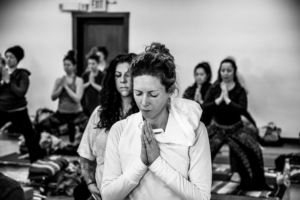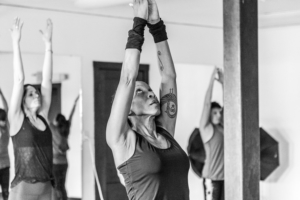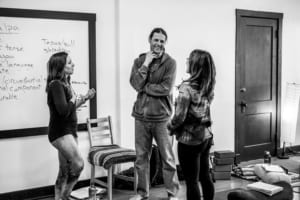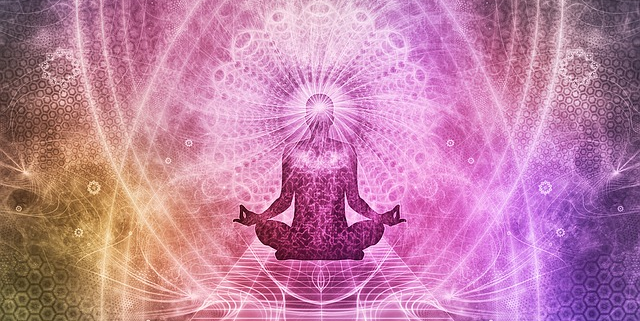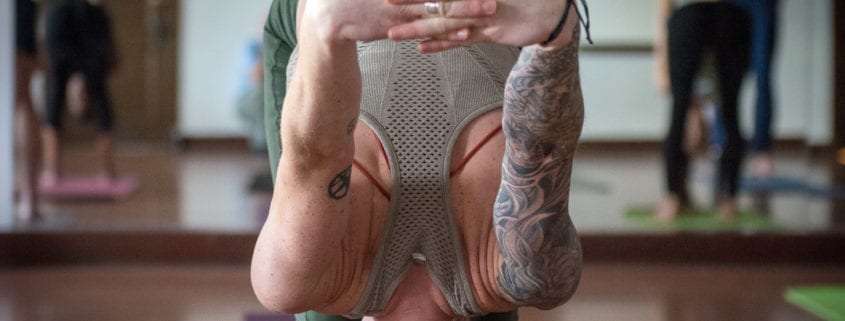Did you know that there are actually five of you? ….Or rather, five distinct layers that constitute you. Would you like to know what those five parts are and how you can support them through yoga?
Early yogic scriptures, espouse that we are much more than a mold of skin and bones that then gives rise to thought. Texts, such as the Taittiriya Upanishad, ascribe that we are composed of five distinct bodies or layers called koshas; each one increasingly more subtle than the preceding. Many asana, pranayama and meditation methods are built around the kosha model and are designed to strengthen and harmonize each layer.
The physical body or “anumaya kosha” in Sanskrit, is the first and most obvious layer. Anumaya kosha literally means the “food sheath”. It is constituted by the food that we consume. Eventually, our physical body will become food for other creature -and thus the wheel of physical nature turns.
Eventually, our physical body will become food for other creature -and thus the wheel of physical nature turns.
Maintaining the health of the physical body, whether through diet, ayurvedic principles, asana or other forms of exercise will vitalize the physical body, prevent disease and prepare us for the journey within.
Pranamaya kosha, the second layer, is constituted by pranic-energy. This energy is non-material though it influences the workings of the physical body. Chinese medicine draws upon pranic principles through the use of acupuncture, which stimulate pranic-meridians to affect changes in physical health. The sun is the ultimate source of pranic energy for life on earth -its invisible rays bathe the planet in life giving warmth.
The sun is the ultimate source of pranic energy for life on our planet
-its invisible rays bathe the earth in life giving warmth.
Prana is also present in the air that we breath and can be optimized through yogic breathing methods called pranayama. Pranayama practices such as the yogic breath, alternate nostril breathing and kapalabhati are designed to increase the health and vitality of the second sheath.
One of the simplest ways to regulate the pranamaya kosha is by extending the inhalation and exhalation and making them as subtle and smooth as possible. Aim to create a sustainable rhythm of breath. You can even integrate this practice into the postures, make each pose, or transition between poses, as a kind of breath meditation, become a connoisseur of respiration and sensation.
Think of it this way…
- Quality of breath first.
- Posture second.
Pranamaya kosha can attune our physical body and influence the third body, manamaya kosha, the mental/sensorial sheath. Manamaya kosha is the instinctual, reflexive aspect of our mind that is designed to keep us safe. It tells us when we are thirsty and allows us to absentmindedly drive from point A to point B without any recollection of the journey. It also processes input from our five senses.
Western culture is entrenched in sensorial stimulation. Examples of this include having one dozen tv screens at a pub/restaurant, violent video games, or simple trying to manage so many life responsibilities that leave one unable to sleep at night. Excessive exposure to these forces generate craving for further stimulation and ultimately leaves one’s mental/sensorial body depleted.
Excessive exposure to these forces generates the craving for further stimulation
and ultimately leaves one’s mental/sensorial body depleted.
Nourishing manamaya kosha requires being selective of the kinds of impressions we feed our mind. Fortunately, there are many yogic techniques for replenishing the mental body such as the meditation kriyas, repetition of mantra (called japa), and pratayaha (sense withdrawal practices).
As a simple recommendation, abstain from the use of electronics for at least an hour and a half before bed to ensure deeper rest. Spend time absorbing the sights, sounds and feel of the natural world. We can also replenish our mind through meaningful work and fulfilling relationships. Start a regular meditation practice.
Tantric-yoga informally designates these first three bodies as one-singular-body, because they are most obviously interrelated. How we move and position our physical body (through asana) influences the quality of our breath. How we breath directly informs the quality of our thoughts. And our level of awareness will inturn support us in becoming more sensitive to the needs of the body. Most modern yoga practitioners operate at the level of these first three koshas, gradually purifying their awareness so that they can develop the inner faculty to perceive the final two sheaths.
The remaining two bodies, vijanamaya kosha, the body of higher knowledge and undeterred will, and anandamaya kosha, the body of bliss, lye beyond the limitations of our rational cognitive mind. The methodical practice of yoga gradually reveals the light and power of these deeper dimensions of our being and lead to spiritual realization.
Whether we consciously recognize it or not,
each of the five koshas are perpetually in motion
Whether we consciously recognize it or not, each of the five koshas are perpetually in motion, The process of yoga helps us to become sensitive to their presence and bring optimal health to each body.
If you have a desire to learn more about each of these koshas (including the final two) I invite you to attend our upcoming workshop on Saturday, June 28th from 9-3:30 where we will discuss each kosha further and do enjoining practices for each. Handouts provided.
KOSHA WORKSHOP:
Saturday, June 28th from 9-3:30
3250 E. Sixth Ave. Denver
(Inside of the church -upstairs)
Good Will Offering $75-150
REGISTER HERE


